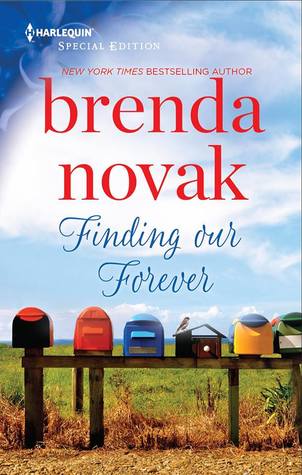 Finding Our Forever (Silver Springs, #1) by Brenda Novak
Finding Our Forever (Silver Springs, #1) by Brenda Novak Formats available: paperback, ebook, audiobook
Series: Silver Springs #1
Pages: 224
Published by Harlequin Special Edition on March 21st 2017
Purchasing Info: Author's Website, Publisher's Website, Amazon, Barnes & Noble, Kobo, Bookshop.org
Goodreads
New York Times bestselling author Brenda Novak welcomes readers to the town of Silver Springs, where surprises wait around every corner!
The search for her birth mother brought Cora Kelly to the New Horizons Boys Ranch. Getting a job there was easy enough, but confiding in Aiyana, the ranch's owner, that she's really her daughter? Cora's not sure she can do that, not unless she's confident the news will be welcomed. And once she gets to know Elijah Turner, Aiyana's adopted son and ranch manager, that decision becomes even more difficult.
Although Elijah can't deny his deep attraction to Cora, he's always struggled with trust. Anyone with his past would, and there's something about the ranch's newest employee that isn't exactly as it seems. But if the feelings she awakes in his guarded heart are any indication, she might be just what he's long been waiting for.
My Review:
Welcome to tiny Silver Springs California, only two hours from the bright lights and big city of Los Angeles in miles, but light years away in everything that counts.
Everyone believes that Cora Kelly has come to Silver Springs to teach art at New Horizons Boys Ranch. And she certainly has. But that’s not the real reason she desperately wanted the job there, two hours from her family and friends back in LA. And two hours away from the job she could have had, teaching full-time at the school where she’d been subbing for the past six years. A job she had originally been looking forward to. Very much.
But New Horizons has one thing that LA can’t begin to match. Cora’s birth mother is the woman who has poured her own life into New Horizons. And Cora, after years of searching, wants to see who her birth mother really is, and especially find out why she gave her up all those years ago. Because it seems like the woman who has poured her heart and soul into helping, saving and sometimes even adopting boys from extremely difficult and/or troubled backgrounds and circumstances does not seem remotely like the kind of woman who would give up her own child.
Cora’s had a terrific life. Her adoptive parents love her dearly, and never loved her less than their biological son. She hasn’t lacked for anything – except the answers that most of us take for granted. And that lack of answers has driven her to Silver Springs, to take a year out of her life to teach at New Horizons, in the hopes of finally getting at least some of those answers.
But she isn’t sure, when, if, or whether she will reveal who she really is. She’s unsure whether or not she’d be welcome. But concealing that truth, living that very big lie, becomes an even dicier proposition than Kelly had planned on when she can’t resist the attractions of Elijah Turner, her boss, the ranch manager, and her mother’s eldest adopted son.
And in spite of Eli’s scarred past and taciturn present, he can’t seem to resist Cora, either. But the more deeply they become involved, not just romantically but also in each other’s lives, the more difficult it becomes for Cora to risk her heart and her happiness to reveal a truth that could shatter everything.
Or bring her everything her heart desires.
Escape Rating B+:The romance in Finding Our Forever is a relationship that often gets relegated to “taboo” erotica, but there’s no feeling of that kind of dirty secret here. If Cora and Eli had been raised together, it might feel different, but they weren’t so it doesn’t. They meet as adults, and are attracted to each other as adults. While Cora is aware that Eli is technically her adopted brother, they share no blood or genes to make any relationship actually be taboo.
But it does make things considerably more complicated, and they are plenty complicated to begin with. The angst in this story does not feel either manufactured or false. Cora has a secret, and she has very valid reasons both for keeping that secret and wanting to reveal it. She’s extremely conflicted about it, and so she should be. At the same time, Eli in particular has equally valid concerns about trust. The deeper they get into a relationship that neither of them expected, the more worried Cora becomes that Eli will feel betrayed by Cora’s hidden identity.
On top of that, when her secret comes out, she could be out of a job, as well as brokenhearted AND forced to go back to her adoptive parents to face a cloud of “I told you so’s” They were not in favor of Cora’s quest for her birth mother, feeling as if Cora’s search was an indictment of their love and their parenting, which it isn’t. But again, their conflicted feelings on this matter are also understandable.
 The only person whose feelings don’t ring true in this entire mess is Cora’s ex-boyfriend, who shows up early in her school year in an attempt to either manipulate her back to him or otherwise horn in on her life. He’s a jerk rather than a threat, but his appearance and Cora’s reaction to it were the one emotional point in the story that just didn’t quite hit the mark.
The only person whose feelings don’t ring true in this entire mess is Cora’s ex-boyfriend, who shows up early in her school year in an attempt to either manipulate her back to him or otherwise horn in on her life. He’s a jerk rather than a threat, but his appearance and Cora’s reaction to it were the one emotional point in the story that just didn’t quite hit the mark.
But Cora’s story certainly does. She gets her answers, and they are nothing like she expected. And she doesn’t get everything that she wanted. But she gets enough for readers to feel more than satisfied that she got her happy ending. And it happens in a way that feels right for the story and the characters.
I really enjoyed my visit to Silver Springs, and I’m looking forward to more. It looks like the series is going to follow the romantic adventures of Eli’s brothers, and I can’t wait to see what happens next, in No One But You.
~~~~~~ TOURWIDE GIVEAWAY ~~~~~~
Brenda and Harlequin are giving away a $25 gift card to one lucky entrant on this tour.

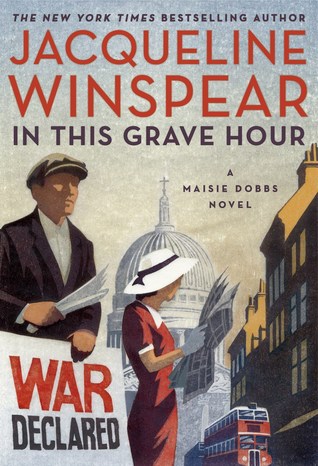 In This Grave Hour (Maisie Dobbs, #13) by
In This Grave Hour (Maisie Dobbs, #13) by 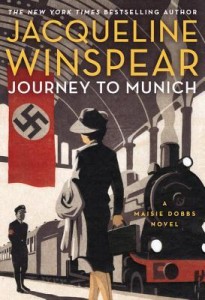 As the story opens, Maisie is dragged away from the war announcement to meet an old colleague. Dr. Francesca Thomas, in her guise as a member of the Secret Service, prepared Maisie for her undercover task in
As the story opens, Maisie is dragged away from the war announcement to meet an old colleague. Dr. Francesca Thomas, in her guise as a member of the Secret Service, prepared Maisie for her undercover task in 
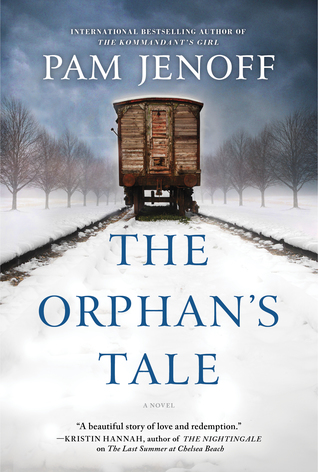 The Orphan's Tale by
The Orphan's Tale by 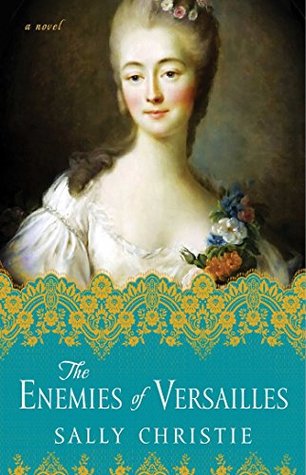 The Enemies of Versailles (The Mistresses of Versailles Trilogy #3) by
The Enemies of Versailles (The Mistresses of Versailles Trilogy #3) by 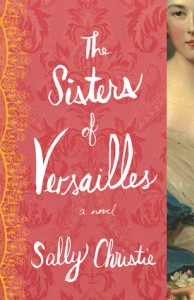 The Enemies of Versailles, and the entire series of the
The Enemies of Versailles, and the entire series of the 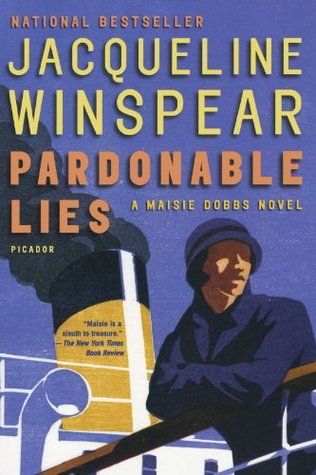 Pardonable Lies (Maisie Dobbs, #3) by
Pardonable Lies (Maisie Dobbs, #3) by 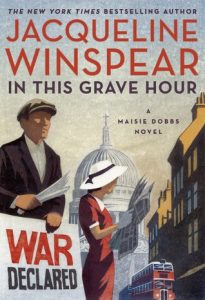 Only one case gets Maisie’s usual whole truth; the case of a young prostitute accused of murdering her pimp. The rush to justice on the part of the police, and their willingness to ignore any and all mitigating or contradictory evidence in order to punish this young woman makes readers see both how far we’ve come and how far we still have to go as a society. Only Maisie, is willing to believe that this woman might be innocent. And only Maisie is willing to delve into the truth to see that justice is actually done.
Only one case gets Maisie’s usual whole truth; the case of a young prostitute accused of murdering her pimp. The rush to justice on the part of the police, and their willingness to ignore any and all mitigating or contradictory evidence in order to punish this young woman makes readers see both how far we’ve come and how far we still have to go as a society. Only Maisie, is willing to believe that this woman might be innocent. And only Maisie is willing to delve into the truth to see that justice is actually done.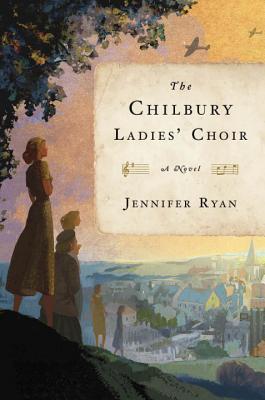 The Chilbury Ladies' Choir by
The Chilbury Ladies' Choir by 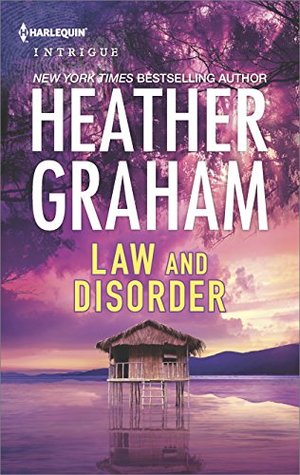 Law and Disorder by
Law and Disorder by 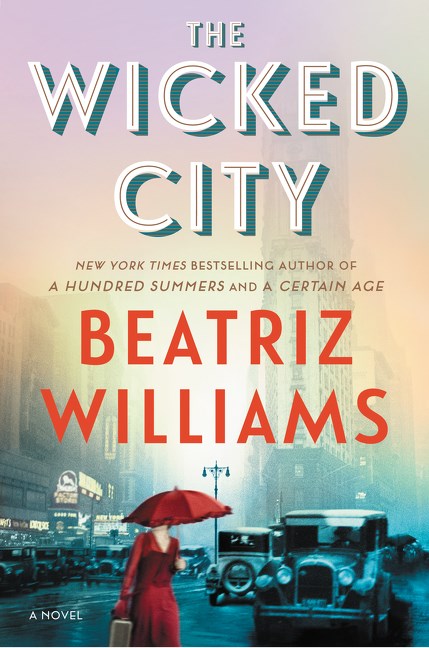 The Wicked City by
The Wicked City by  In addition to the connection between Gin and Ella, there’s also a connection between Gin and the characters in A Certain Age, and indeed the characters of many of the author’s previous books. It’s not such a tight connection that the reader needs to worry about having read the other books, and it’s also not completely revealed or resolved. But these people all inhabit the same social circles, and everyone seems to know, or at least know of, everyone else.
In addition to the connection between Gin and Ella, there’s also a connection between Gin and the characters in A Certain Age, and indeed the characters of many of the author’s previous books. It’s not such a tight connection that the reader needs to worry about having read the other books, and it’s also not completely revealed or resolved. But these people all inhabit the same social circles, and everyone seems to know, or at least know of, everyone else.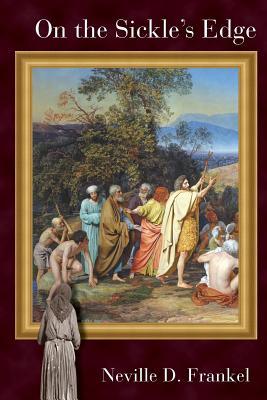 On the Sickle's Edge by
On the Sickle's Edge by 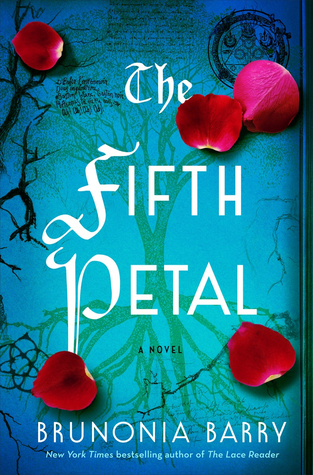 The Fifth Petal (The Lace Reader, #2) by
The Fifth Petal (The Lace Reader, #2) by 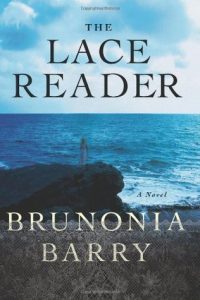 In spite of the blurb, The Fifth Petal doesn’t have much to do with Towner Whitney, the heroine of
In spite of the blurb, The Fifth Petal doesn’t have much to do with Towner Whitney, the heroine of